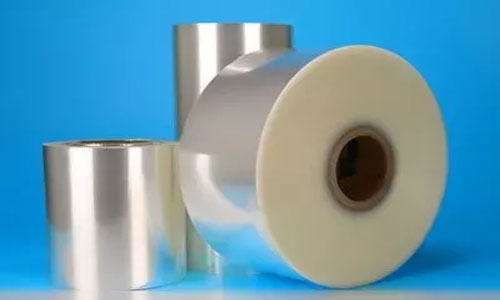BOPP film, also known as biaxially oriented polypropylene film, is a versatile and widely used material in various industries. This high-quality plastic film is produced through a process called biaxial orientation, which imparts excellent mechanical and optical properties to the film. BOPP film exhibits remarkable clarity, making it ideal for applications where visual appeal is crucial. Its moisture resistance and heat sealability make it an excellent choice for packaging solutions, offering protection to various products. Additionally, BOPP film is environmentally friendly and can be easily printed, opening up possibilities for branding and customizations. Whether it's for flexible packaging, adhesive tapes, or laminating purposes, BOPP film proves its versatility, reliability, and suitability for a wide range of applications.

Common quality issues that occur after the slitting of film products include looseness, neatness of the end face, stripes, misalignment, curling edges, raised veins, creases, star shapes, scratches, and insufficient length, among others. While meeting the standards for physical and mechanical properties is important, the appearance quality is a significant factor affecting the overall quality of film products. Poor appearance quality can greatly impact the product grade, and the main factors influencing appearance quality depend on the quality of the slitting machine, the setting and control of the slitting process parameters, the slitting conditions, and the quality of the paper core.
Analysis of Causes
The reasons for appearance quality issues during the slitting process, which result in downgrading of film products, can be attributed to the following:
1. Longitudinal stripes: These refer to radial rib-like stripes formed on the surface of the film roll. The main causes of longitudinal stripes are the entrapment of air and poor thickness tolerance during the slitting process. Once severe stripes occur, they are difficult to eliminate.
2. Misalignment: This refers to the phenomenon where a portion of the film deviates from the end face during rewinding. It is caused by movement of the film or changes in its width during rewinding. Additionally, large thickness deviations or paper core fluctuations can also cause misalignment.
3. Bottom wrinkles: Bottom wrinkles only occur at the beginning of the film rewinding process and are characterized by multiple and deep wrinkles and stripes. Multiple factors, such as poor cleanliness of the paper core or improper bottom winding, can cause this phenomenon.
4. Curling edges: This occurs at the edge position of the film during rewinding, where the thick edge of the film curls up due to overlapping during rewinding. It can also be caused by the cutting knife or excessive rewinding tension.
5. Raised veins: These are apparent protrusions formed on the surface of the film roll due to cumulative thickness deviations.
6. Insufficient length and significant width deviation: These are caused by counting errors during rewinding, insufficient length of the slitting mother roll, or incorrect equipment positioning.
7. Creases: These are caused by poor bottom winding or significant thickness deviations.
8. Star shapes: The main cause is excessive transverse thickness deviation of the mother roll or paper core fluctuations.
9. Scratches: These occur during slitting due to foreign objects on the floating roller or pressure roller.
Control Methods
1. Slitting speed: The slitting speed directly affects the slitting quality of the film. Under the conditions of poor quality of the mother roll or paper core, high-speed slitting can easily lead to quality issues such as misalignment and longitudinal stripes of the film products. Therefore, controlling the slitting speed based on the quality of the mother roll is one of the important methods to improve the yield of high-grade film products.
2. Running precision: After long-term continuous use, the running precision of some components of the slitting machine may decrease, making it more prone to quality issues such as longitudinal stripes and surface scratches. Therefore, timely replacement of components with high running precision and durability is necessary.
3. Setting and control of process parameters: Selecting suitable slitting process parameters, such as rewinding tension, tension attenuation value, and correction coefficient, can improve issues like longitudinal stripes and bottom wrinkles. For different types and specifications of films, appropriate adjustments and optimizations of the slitting parameters should be made. Additionally, adjustments can be made to compensate for changes in equipment conditions, ensuring the quality of the film products after slitting.
Other issues to note during operation include:
- Paying attention to the splicing of joints and ensuring the length and quality of the joints.
- Timely replacement of the cutting knife to avoid curling edges and burrs.
- Conducting inspections during slitting to identify problems and take timely measures for adjustments.
- When changing the cutting knife, attention should be paid to the rewinding width, and the width should be measured after the change.
Control of unwinding and packaging:
Well-packaged film products are not only convenient for storage and transportation but also reduce the possibility of contamination, collisions, and moisture damage during circulation, ensuring the packaging quality of film products before they are used by downstream enterprises. Therefore, it is important to strengthen the management of unwinding, packaging, transportation, and warehousing to ensure that film products are not damaged.
Contact: Pamela
Phone: +86 189 6365 3253
E-mail: info@industryprocess.com
Whatsapp:+86 189 6365 3253
Add: Yajing Industrial Park, No. 59 Shuangjing Street, Weiting Town, Suzhou Industrial Park
We chat
